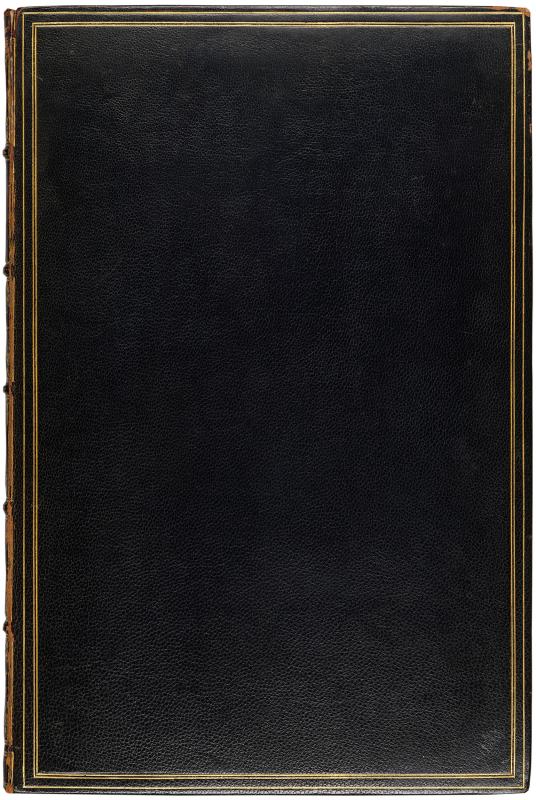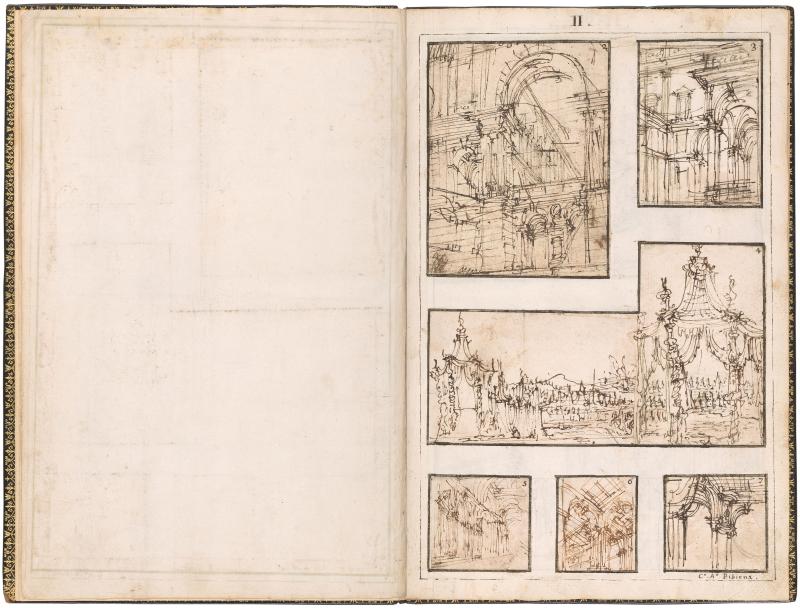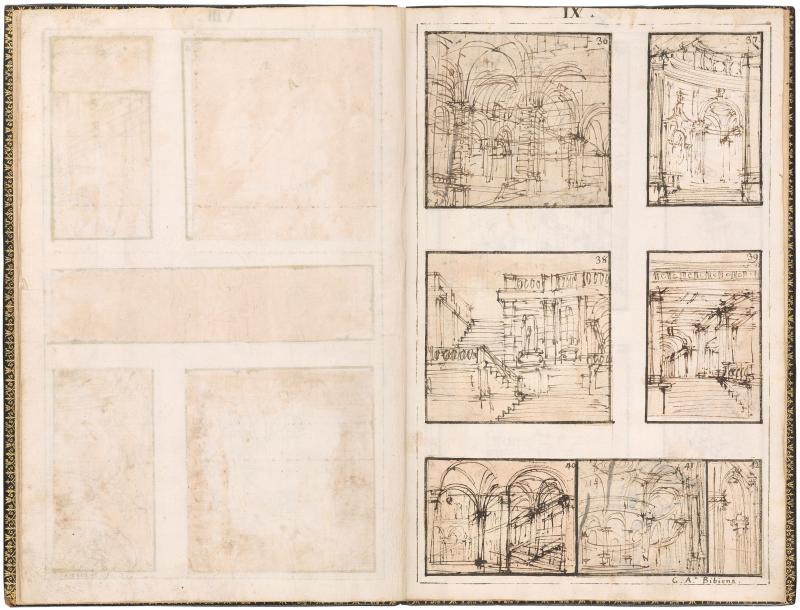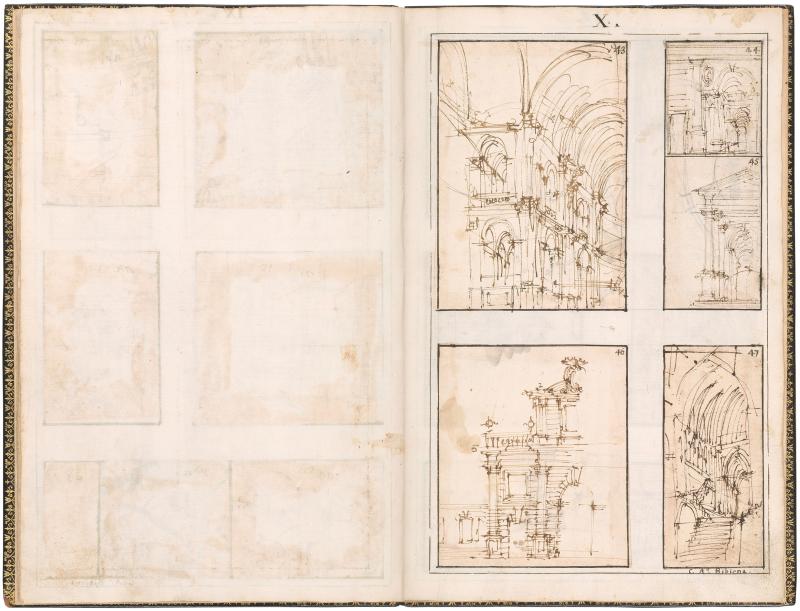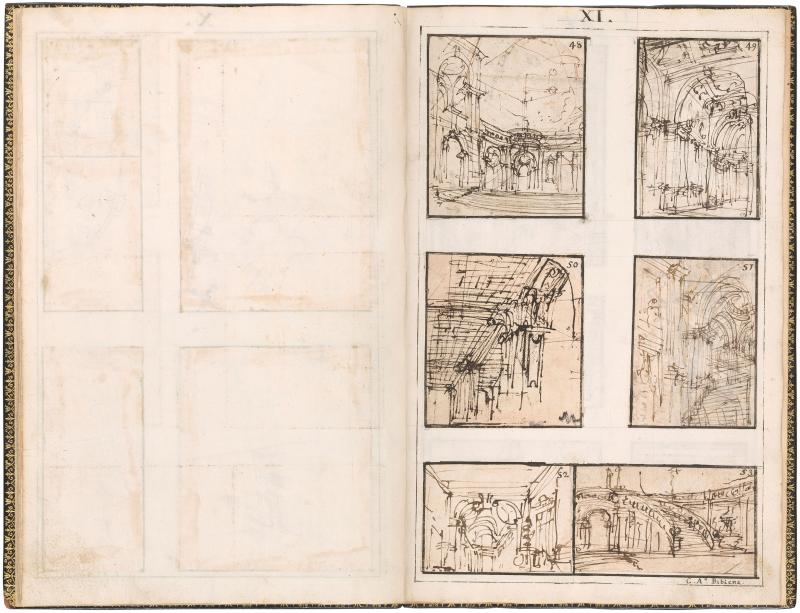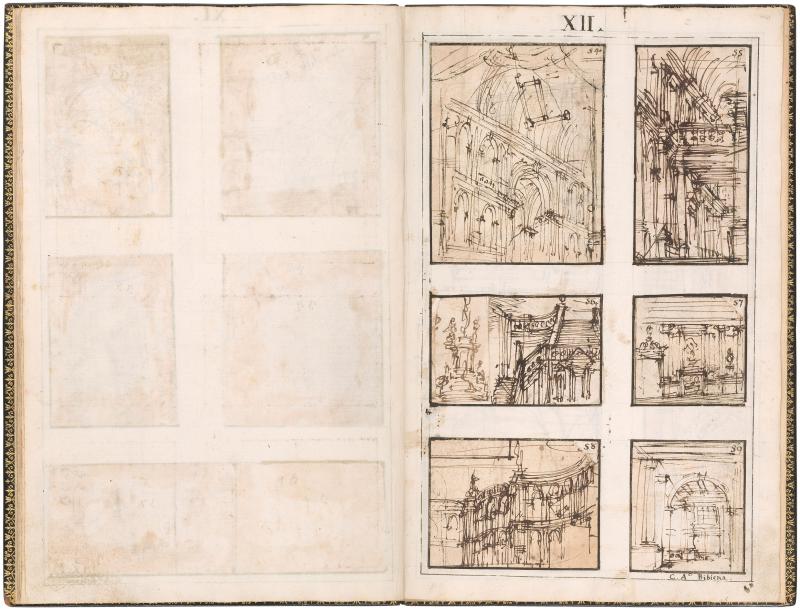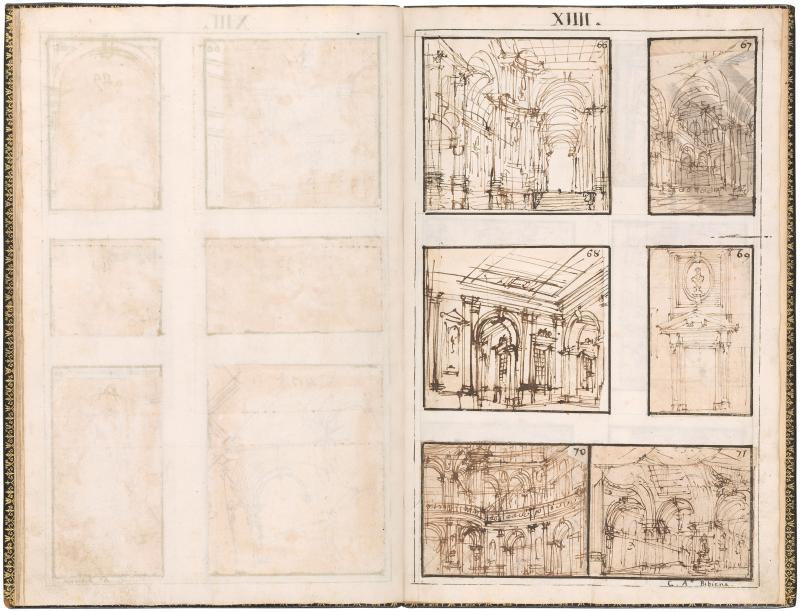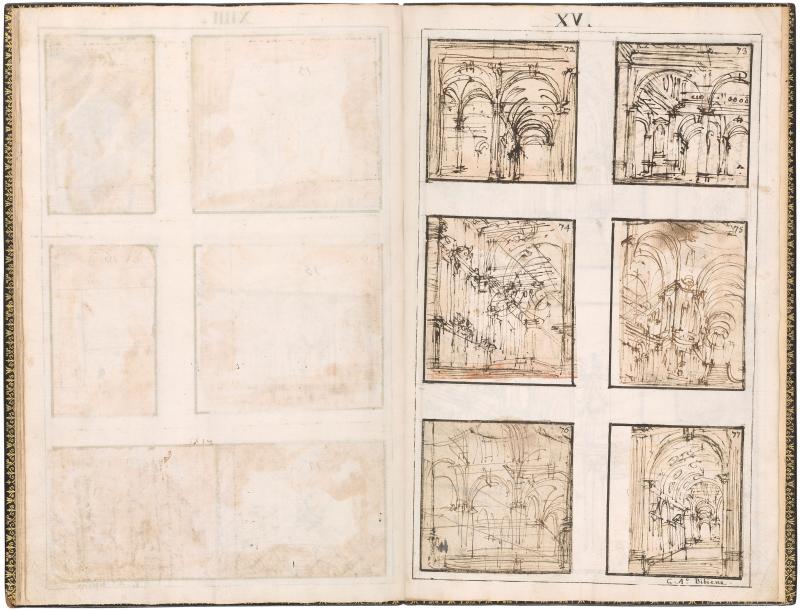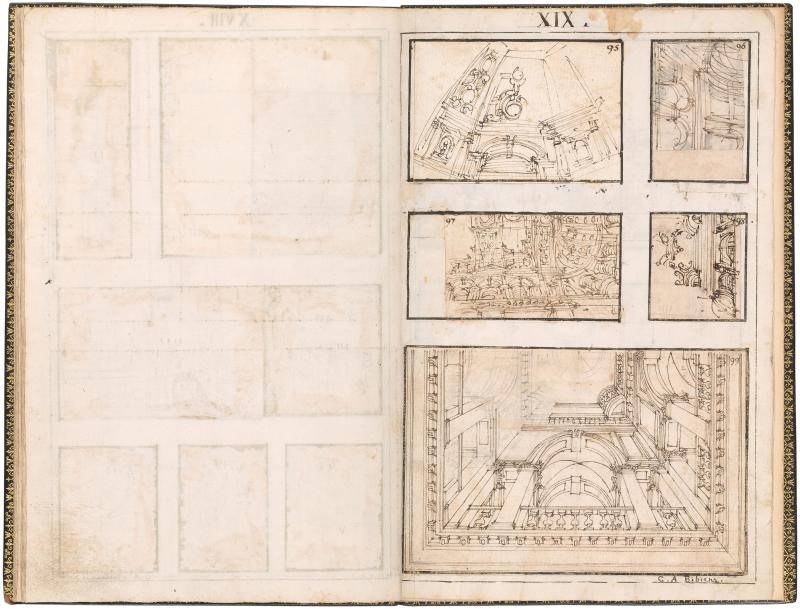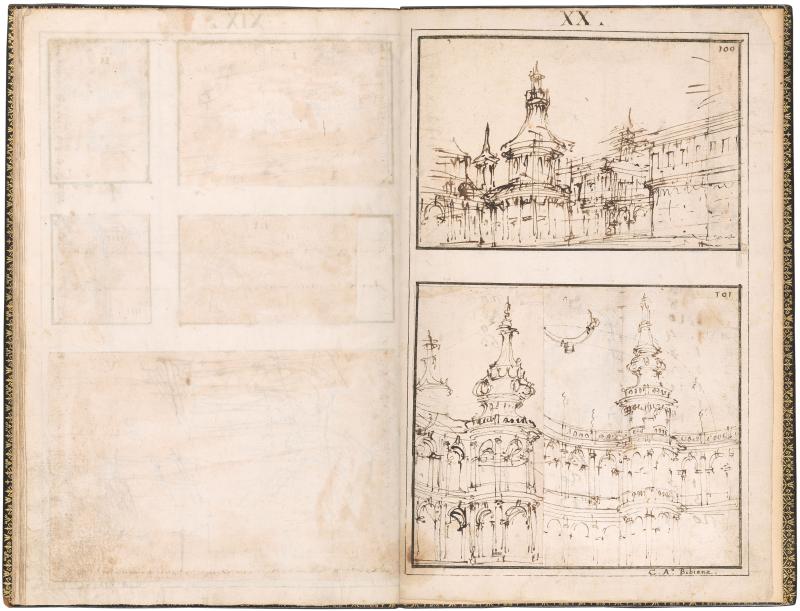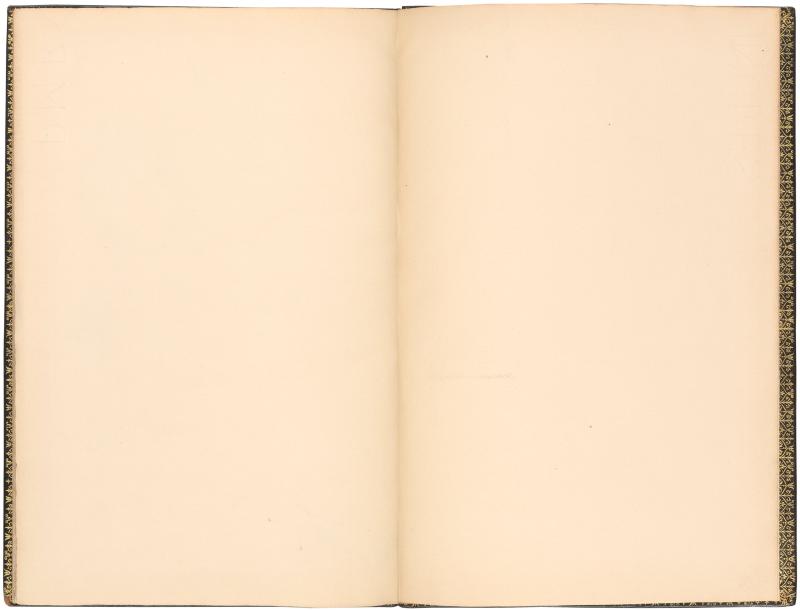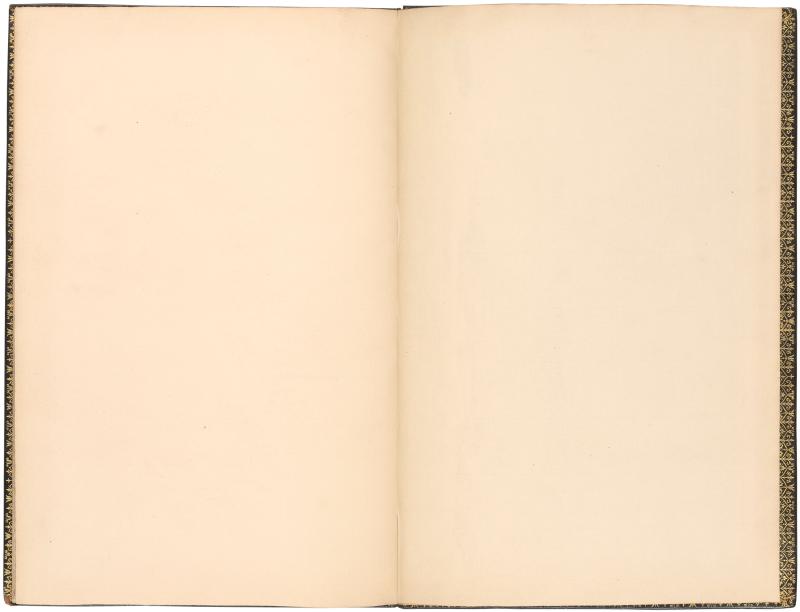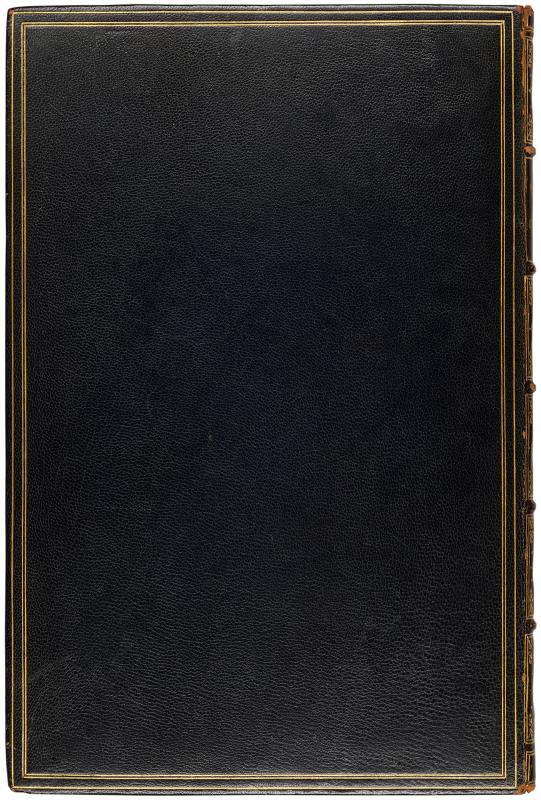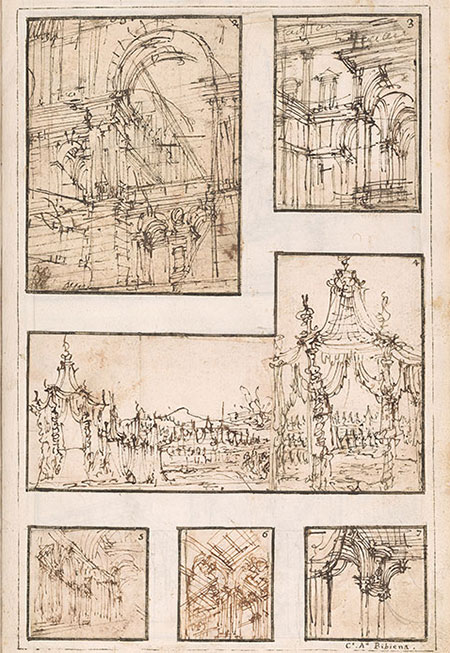
This album contains 101 sketches by Antonio Galli Bibiena (1697–1774). The son of Ferdinando Galli Bibiena (1657–1743), the first member of the Bibiena family to dedicate himself to scenography, Antonio also received training from the Bolognese painters Giovan Gioseffo dal Sole (1654–1719) and Marcantonio Franceschini (1648-1729), but from a young age accompanied his father, uncle, and brothers and assisted with their theatrical endeavors in Barcelona, Vienna, and Rome. Antonio worked as an architect and illusionistic fresco painter as well as a scenographer. In the 1740s he was active mainly in Vienna and Bratislava, before returning to Italy in 1751, where he was responsible for building theaters and designing productions in Siena, Pistoia, Bologna, Milan, Parma, Pavia, and elsewhere. Many of his buildings do not survive, but his Teatro Scientifico in Mantua, completed in 1767, is one of the best-preserved eighteenth-century theaters in Italy.
The sketches found in this album relate mainly to his work as a set designer, and some to his work as a painter of illusionistic frescoes, but rather than finished plans, most of them are quick studies of architectural motifs that would have been elaborated in further drawings. Known as the Oenslager Album, the volume came to the Morgan as part of the enormous collection of theater drawings assembled by the scenographer Donald Oenslager (1902–1975). It was previously in the collection of Edmond Fatio (1871–1959), the Geneva architect who was another of the greatest twentieth-century collectors of theater design materials.

